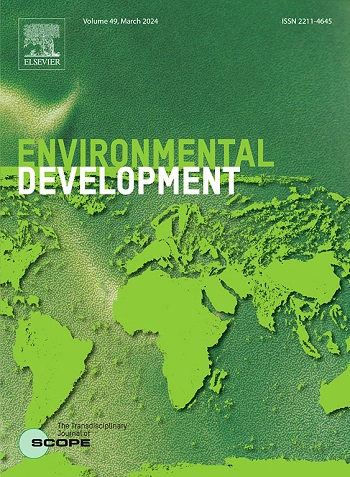基于模糊逻辑模型的法尔斯省城市化压力下环境承载力评价与制图:熵模糊综合评价法与层次分析法的比较
IF 5.3
2区 环境科学与生态学
Q2 ENVIRONMENTAL SCIENCES
引用次数: 0
摘要
经济增长、发展和人口迅速增长的协同作用大大增加了对能源和粮食的需求,导致更多地利用资源和环境后果。因此,决策者必须评估环境可持续性及其对可持续发展的影响。本研究旨在运用综合模糊方法,对伊朗法尔斯省的环境承载力进行量化分析。结果表明,不同县域的环境和经济能力存在明显差异。在设拉子,通过联合加权系统确定的承载能力明显较低,主要是由于高人口压力和城市化。该省约70%的土地面积具有中低环境承载力的特点,特别是在南部和中部城市地区。此外,还采用了一个以障碍程度为重点的模型来研究环境质量与影响环境质量的各种因素之间的关系。研究结果强调,生境质量和植被覆盖水平是限制我省承载力的主要因素,障碍物发生的频率在85%以上。这强调了有针对性干预的重要性。因此,处于危急状况的国家应优先考虑在这些方面的投资,以提高其环境质量,并随后转向发展努力。本文章由计算机程序翻译,如有差异,请以英文原文为准。
Assessment and mapping environmental carrying capacity under urbanization stress in Fars Province using fuzzy logic modeling: A comparison between entropy and AHP fuzzy comprehensive evaluation method
The synergistic effects of economic growth, development, and a rapidly increasing population have significantly increased the demand for energy and food, leading to greater utilization of resources and environmental consequences. Therefore, policymakers must assess environmental sustainability and its impact on sustainable development. The present study aims to quantify and analyze the environmental carrying capacity of the Fars Province in Iran through the application of a comprehensive fuzzy methodology. The results reveal distinct patterns of environmental and economic capacity across different counties. In Shiraz, the carrying capacity, determined through a combined weighting system, was found to be significantly low, mainly because of the high population pressure and urbanization. Approximately 70 % of the province's land area is characterized by medium to low environmental carrying capacity, particularly in southern and central urban regions. Moreover, a model focusing on the degree of obstacles was applied to examine the relationship between environmental quality and the various factors that influence it. The research outcomes emphasize that the quality of habitats and the level of vegetation coverage are the principal factors that limit the province's carrying capacity, with the frequency of obstacles recorded at over 85 %. This underscores the importance of targeted intervention. Thus, counties in critical conditions should prioritize investments in these aspects to enhance their environmental quality and subsequently move towards developmental efforts.
求助全文
通过发布文献求助,成功后即可免费获取论文全文。
去求助
来源期刊

Environmental Development
Social Sciences-Geography, Planning and Development
CiteScore
8.40
自引率
1.90%
发文量
62
审稿时长
74 days
期刊介绍:
Environmental Development provides a future oriented, pro-active, authoritative source of information and learning for researchers, postgraduate students, policymakers, and managers, and bridges the gap between fundamental research and the application in management and policy practices. It stimulates the exchange and coupling of traditional scientific knowledge on the environment, with the experiential knowledge among decision makers and other stakeholders and also connects natural sciences and social and behavioral sciences. Environmental Development includes and promotes scientific work from the non-western world, and also strengthens the collaboration between the developed and developing world. Further it links environmental research to broader issues of economic and social-cultural developments, and is intended to shorten the delays between research and publication, while ensuring thorough peer review. Environmental Development also creates a forum for transnational communication, discussion and global action.
Environmental Development is open to a broad range of disciplines and authors. The journal welcomes, in particular, contributions from a younger generation of researchers, and papers expanding the frontiers of environmental sciences, pointing at new directions and innovative answers.
All submissions to Environmental Development are reviewed using the general criteria of quality, originality, precision, importance of topic and insights, clarity of exposition, which are in keeping with the journal''s aims and scope.
 求助内容:
求助内容: 应助结果提醒方式:
应助结果提醒方式:


